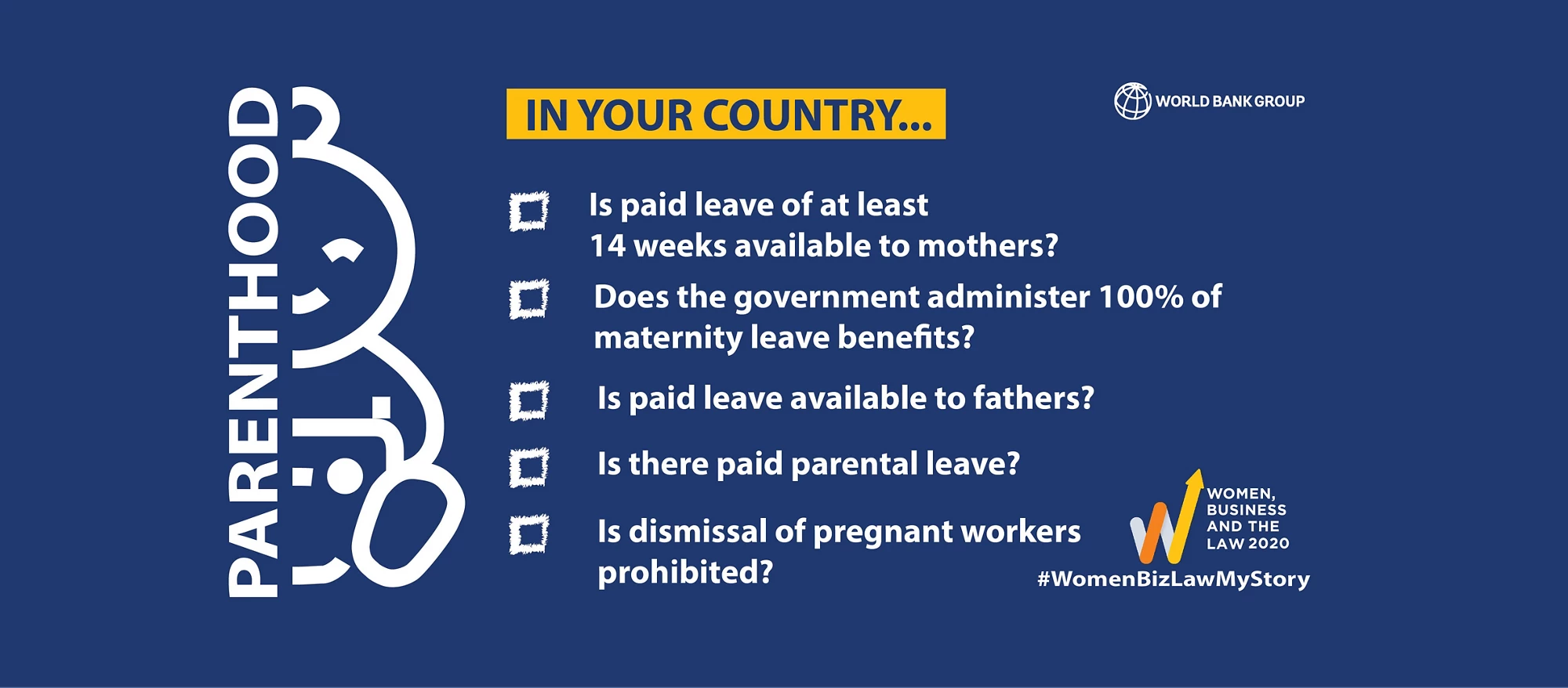 Parenthood indicator
Parenthood indicator
I once read that women’s equality in the workplace cannot be achieved without men’s equality in the home. That’s why when I was pregnant, I made my husband take a breastfeeding class designed for men and urged him to take as much the paternity leave as possible. I even gave a talk at the World Bank on why the world needs more paternity leave, where I confidently declared that my husband would be changing all the diapers. But once our daughter was born, achieving equality at home was far from easy. For most of my maternity leave, I averaged four to seven hours per day of breastfeeding. My husband, on the other hand, had no paid paternity leave. Even when I returned to the office and childcare responsibilities were evenly split, I faced challenges readjusting to the workplace that he did not.
Women around the world from every income bracket face various obstacles when they become parents. The motherhood penalty and discrimination can reduce women’s wages, lower their chances for promotion or even drive them out of the workforce all together. The World Bank’s Women, Business and the Law tracks how a working woman interacts with the law at different stages of her life—including parenthood—in 190 countries worldwide. It is around this exact milestone where women need the most support, but many countries’ laws fall short. Parenthood is the lowest scoring indicator in the Women, Business and the Law index: the average score is just 53.9 of 100 points.
While almost every country in the world mandates paid maternity leave (97%), only 115 countries legally guarantee 14 weeks or more of paid leave for mothers. Paid paternity leave is less common. Just over half of all countries reserve any duration of paid time off for new dads. And paid parental leave—a policy equally available to parents—is the most rare, available now in only 43 countries worldwide. The duration of leave is not the only factor that matters; who pays the benefits can also affect gender equality. Of the 184 economies that offer mothers any duration of paid leave, the government administers maternity benefits in about half of the countries studied.
Median length of paid leave for mothers and fathers
Ensuring that mothers and fathers have adequate paid leave for the birth of a child should be priority for economic development. Studies show that adequate maternity leave can lead to lower infant mortality rates, health benefits for the mother, higher female labor force participation and increased breastfeeding rates. Paternity leave also has a wide range of benefits that can improve development outcomes, including health and economic benefits to the mother, more equitable division of household labor and increased child bonding. Researchers have linked fathers’ use of leave with increased earnings for the mother, reduced mother-absenteeism due to sickness and higher female employment in private firms.
The good news is that policymakers across the globe are taking action. Between 2017 and 2019, 16 countries improved legal protections for parents. Fiji, for instance, introduced five days of paid paternity leave and increased the duration of paid maternity leave from 84 to 98 days. Canada launched a new parental leave sharing benefit that reserves 35 days of paid parental leave for the father. And the Democratic Republic of Congo’s new social security system now administers maternity benefits. In my own country, parental leave is finally gaining momentum as well. While the United States still has no federally-mandated paid family leave policy, several states—including New York—have recently introduced paid family leave programs. U.S. federal government employees also became eligible for paid parental leave at the end of last year. Women, Business and the Law finds that overall, governments are reforming the most in the area where the most changes are needed, indicating that further improvements can be expected.



Join the Conversation